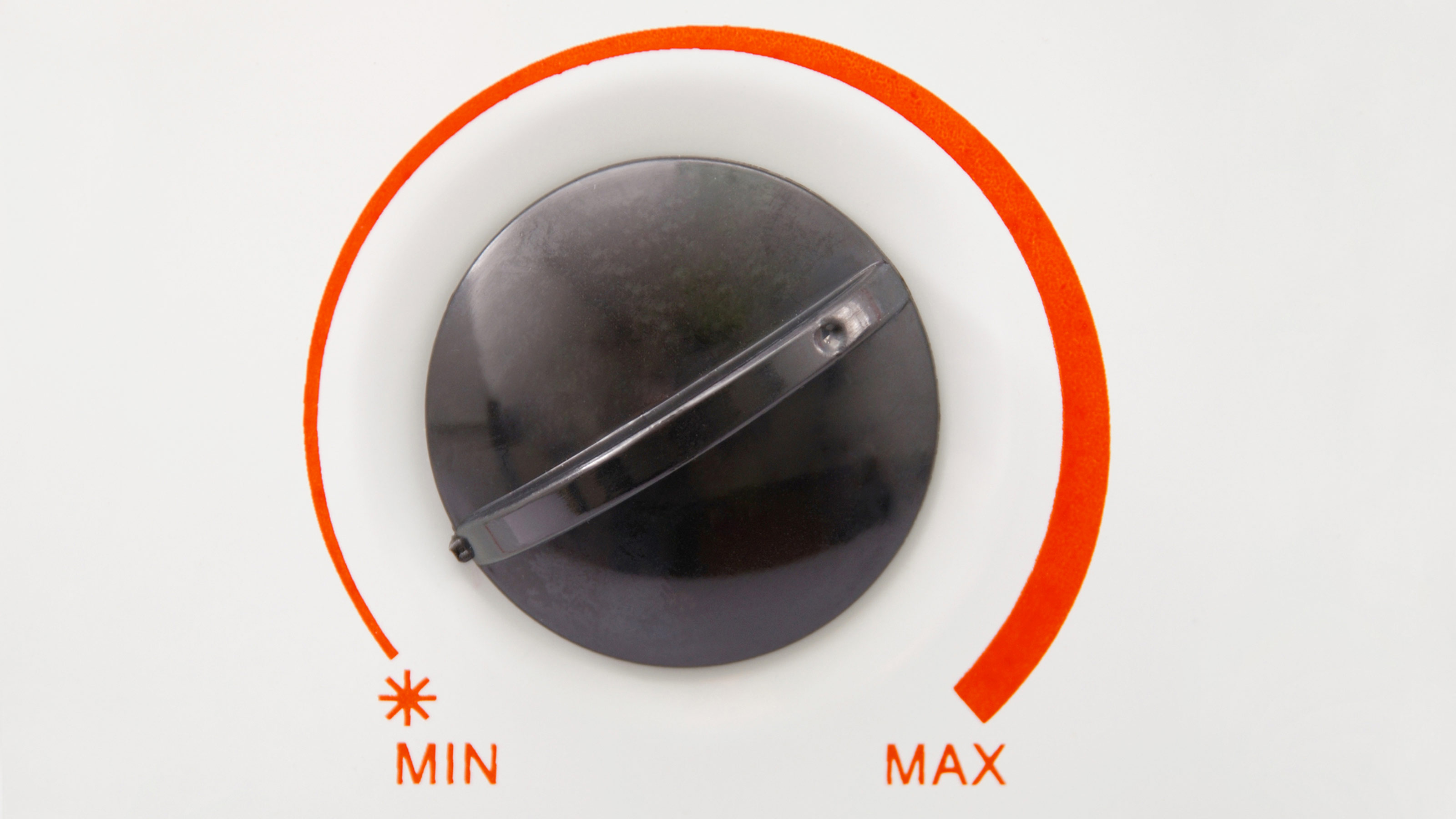Could Now Be the Right Time to Dial Down Your Investment Risk?
The stock market’s stunning turn of events recently could present a golden opportunity to rebalance your portfolio.


After the stock market began its plunge in mid-March, investors hurried to find out if their portfolios could withstand the steep drop and what to do next. Now, several weeks later, we’ve all exhaled as the market has gradually recovered.
Fortunately, this scenario may benefit many investors, presenting them with a golden opportunity to re-allocate their portfolios to match their risk tolerance. This is particularly true for those who gradually increased their allocation to equities in recent years and then saw their portfolios collapse in March. Now, with the Standard & Poor’s 500 index only off 8.4% from its all-time highs as of June 30, it’s time for all investors to examine their tolerance for risk without having an uncomfortable discussion as the market is plummeting.
Historical Figures Reveal a Surprising Sweet Spot
This opportunity exists even as some investors wonder if they should double down on the markets’ recovery. They are concerned if they don’t have enough stocks in their portfolio, or the right stocks, they will miss out if the market races to a new record in the next 12 months.
From just $107.88 $24.99 for Kiplinger Personal Finance
Be a smarter, better informed investor.

Sign up for Kiplinger’s Free Newsletters
Profit and prosper with the best of expert advice on investing, taxes, retirement, personal finance and more - straight to your e-mail.
Profit and prosper with the best of expert advice - straight to your e-mail.
But history shows us there is a “sweet spot” in any portfolio when we consider the trade-off between risk and reward. It may seem hard to believe, but it tends to be a portfolio that consists of between 50% and 60% stocks.
As an investor’s portfolio takes on more risk, with stocks making up 70%, 80% or more, returns can certainly increase as the market moves higher. But because their portfolio becomes less and less diverse, the investor takes on significantly more risk. And that’s what caused panic in some people a couple of months back.
A Clear Example of Risk vs. Return
A simple chart comparing the performance of three portfolios helps demonstrate the often-disproportionate relationship between risk and return. The chart below shows the performance of three different portfolios over a 5-, 10- and 15-year period.
It’s important to note that while the portfolio consisting of 75% stocks performed slightly better than those with only 60%, the difference is small. At the same time, the stock-heavy portfolio leaves little margin for error during a sharp downturn like the one we just experienced.
Over a 15-year period, it is no surprise that when looking at the rolling period with the best-case scenario, the portfolio with 75% stocks had the best returns, at 16.8%. Surprisingly, the more conservative portfolios – those with a 60/40 and 40/60 mix of stocks and bonds, were not far behind. The former gained 15.6% and the latter 13.9%. (Note: To see the full chart, you may need to use the scroll arrow. Depending on your device, it may be easier to view the full chart here.)
| Header Cell - Column 0 | Header Cell - Column 1 | Header Cell - Column 2 | Header Cell - Column 3 | Header Cell - Column 4 | Header Cell - Column 5 | Header Cell - Column 6 | Header Cell - Column 7 | Header Cell - Column 8 | Header Cell - Column 9 |
|---|---|---|---|---|---|---|---|---|---|
| Historic Rolling Returns* | |||||||||
| 75% Stocks/25% Bonds | 60% Stocks/40% Bonds | 40% Stocks/60% Bonds | |||||||
| 43.08% | 36.46% | 26.71% | |||||||
| Rolling Period | Best | Average | Worst | Best | Average | Worst | Best | Average | Worst |
| 5 Years | 27.55% | 10.01% | -3.34% | 24.92% | 9.53% | -1.60% | 24.73% | 8.81% | 0.67% |
| 10 Years | 17.47% | 9.75% | -0.68% | 16.57% | 9.40% | 0.81% | 15.59% | 8.83% | 2.70% |
| 15 Years | 16.79% | 10.01% | 3.76% | 15.57% | 9.66% | 4.13% | 13.89% | 9.09% | 4.51% |
| *information based on Ibbotson Large Cap Stocks and Corporate Bond historic performance from 1969 to present |
However, proper retirement planning is not based on best-case scenarios. Looking at the same portfolios, the average 15-year rolling period showed annual gains of 10%, 9.7% and 9.1%, respectively. Again, the portfolio consisting of 75% stocks and 25% bonds performed the best, but the difference between the three portfolios is quite slim.
This becomes especially important for investors with a shorter time horizon investing in today’s relatively expensive market. An expensive market does not necessitate a crash, but it does heighten the risk of one. Looking at the worst rolling periods tells us that even over 10- to 15-year periods, conservative portfolios may hold up better than aggressive ones.
What This Means for Investors Today
So, for those investors who believe now is the time to move a high percentage of their portfolio into stocks, you may want to think again. Our lesson from the data is simple: Do not make the mistake of assuming that a much riskier investment portfolio has the potential for a significantly higher return, even over a long period. There is no need to maintain a high-risk portfolio because of fear of leaving money on the table. The real-world differences in rates of return are slim, and in many circumstances can be negative.
We don’t know what level of returns the stock market will produce going forward. However, we know the relationship between risk and reward holds remarkably stable over time and market conditions.
If the events of the last two months caused you to lose sleep or frantically call your adviser to make a change, now is your chance to make thoughtful changes to your allocation. At some point, there will be another event that will have an unfavorable financial impact. Will you be prepared when it happens?
For now, markets have made a strong step toward recovery, but the road forward is increasingly uncertain. If another crash occurs, no investor wants to find out they’ve taken on too much risk after another 30% or more drop; the next recovery may not come so quickly. Remember the goal is financial independence, not capturing every single penny of return at the expense of your mental health.
The only benchmark you need to meet is the retirement date circled on your calendar.
Profit and prosper with the best of Kiplinger's advice on investing, taxes, retirement, personal finance and much more. Delivered daily. Enter your email in the box and click Sign Me Up.

Herman Freitag is an associate wealth adviser with McGill Advisors, a Division of CI Brightworth. Prior to joining McGill Advisors he was with a national investment firm serving high-net-worth clients for four years. Previously he had worked for the private banking and retail arms of a national bank for four years. He earned his CERTIFIED FINANCIAL PLANNER™ professional certification in 2017. Herman is a native of New Orleans.
-
 Dow, S&P 500 Slip on December Rate Cut Worries, Nvidia Boosts Nasdaq: Stock Market Today
Dow, S&P 500 Slip on December Rate Cut Worries, Nvidia Boosts Nasdaq: Stock Market TodayNvidia became the first company ever to boast a $5 trillion market cap, but it wasn't enough to lift the Dow and the S&P 500.
-
 Where You Choose to Stash $100k Now Comes with a Big Opportunity Cost
Where You Choose to Stash $100k Now Comes with a Big Opportunity CostThe Fed recently cut rates. Here's where to maximize your savings while rates remain higher.
-
 I'm a CPA: Control These Three Levers to Keep Your Retirement on Track
I'm a CPA: Control These Three Levers to Keep Your Retirement on TrackThink of investing in terms of time, savings and risk. By carefully monitoring all three, you'll keep your retirement plans heading in the right direction.
-
 Debunking Three Myths About Defined Outcome ETFs (aka Buffered ETFs)
Debunking Three Myths About Defined Outcome ETFs (aka Buffered ETFs)Defined outcome ETFs offer a middle ground between traditional equity and fixed-income investments, helping provide downside protection and upside participation.
-
 This Is Why Judge Judy Says Details Are Important in Contracts: This Contract Had Holes
This Is Why Judge Judy Says Details Are Important in Contracts: This Contract Had HolesA couple's disastrous experience with reclaimed wood flooring led to safety hazards and a lesson in the critical importance of detailed contracts.
-
 A Lesson From the School of Rock (and a Financial Adviser) as the Markets Go Around and Around
A Lesson From the School of Rock (and a Financial Adviser) as the Markets Go Around and AroundIt's hard to hold your nerve during a downturn, but next time the markets take a tumble, remember this quick rock 'n' roll tutorial and aim to stay invested.
-
 I'm a Financial Pro: This Is How You Can Guide Your Heirs Through the Great Wealth Transfer
I'm a Financial Pro: This Is How You Can Guide Your Heirs Through the Great Wealth TransferFocus on creating a clear estate plan, communicating your wishes early to avoid family conflict, leaving an ethical will with your values and wisdom and preparing them practically and emotionally.
-
 To Reap the Full Benefits of Tax-Loss Harvesting, Consider This Investment Strategist's Steps
To Reap the Full Benefits of Tax-Loss Harvesting, Consider This Investment Strategist's StepsTax-loss harvesting can offer more advantages for investors than tax relief. Over the long term, it can potentially help you maintain a robust portfolio and build wealth.
-
 Social Security Wisdom From a Financial Adviser Receiving Benefits Himself
Social Security Wisdom From a Financial Adviser Receiving Benefits HimselfYou don't know what you don't know, and with Social Security, that can be a costly problem for retirees — one that can last a lifetime.
-
 Take It From a Tax Expert: The True Measure of Your Retirement Readiness Isn't the Size of Your Nest Egg
Take It From a Tax Expert: The True Measure of Your Retirement Readiness Isn't the Size of Your Nest EggA sizable nest egg is a good start, but your plan should include two to five years of basic expenses in conservative, liquid accounts as a buffer against market volatility, inflation and taxes.